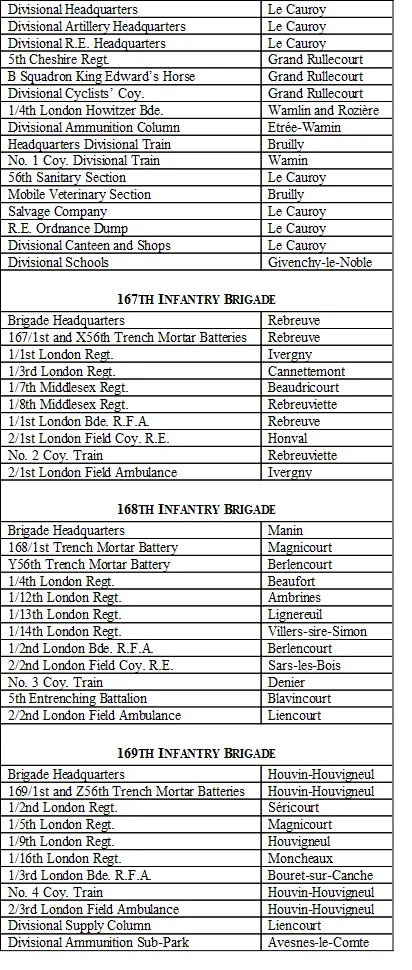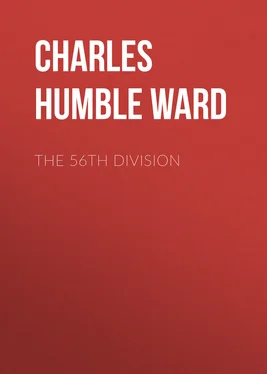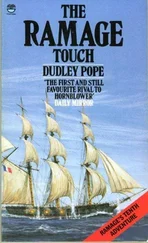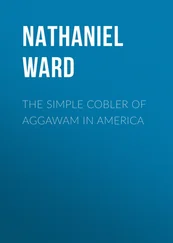Charles Humble Dudley Ward - The 56th Division
Здесь есть возможность читать онлайн «Charles Humble Dudley Ward - The 56th Division» — ознакомительный отрывок электронной книги совершенно бесплатно, а после прочтения отрывка купить полную версию. В некоторых случаях можно слушать аудио, скачать через торрент в формате fb2 и присутствует краткое содержание. Жанр: foreign_prose, История, foreign_edu, foreign_antique, на английском языке. Описание произведения, (предисловие) а так же отзывы посетителей доступны на портале библиотеки ЛибКат.
- Название:The 56th Division
- Автор:
- Жанр:
- Год:неизвестен
- ISBN:нет данных
- Рейтинг книги:5 / 5. Голосов: 1
-
Избранное:Добавить в избранное
- Отзывы:
-
Ваша оценка:
- 100
- 1
- 2
- 3
- 4
- 5
The 56th Division: краткое содержание, описание и аннотация
Предлагаем к чтению аннотацию, описание, краткое содержание или предисловие (зависит от того, что написал сам автор книги «The 56th Division»). Если вы не нашли необходимую информацию о книге — напишите в комментариях, мы постараемся отыскать её.
The 56th Division — читать онлайн ознакомительный отрывок
Ниже представлен текст книги, разбитый по страницам. Система сохранения места последней прочитанной страницы, позволяет с удобством читать онлайн бесплатно книгу «The 56th Division», без необходимости каждый раз заново искать на чём Вы остановились. Поставьте закладку, и сможете в любой момент перейти на страницу, на которой закончили чтение.
Интервал:
Закладка:
It is not easy to keep the brigade groupings in mind at this stage—arrangements were recast and designations were changed. The 1/1st (London) Bde. R.F.A., the 2/1st (London) Field Coy. R.E., the 2/1st (London) Field Ambulance were posted to the 167th Brigade. The 1/2nd London Bde. R.F.A., the 2/2nd London Field Coy. R.E., and the 2/2nd London Field Ambulance were posted to the 168th Brigade. The 1/3rd London Bde. R.F.A. and the 2/3rd London Field Ambulance to the 169th Brigade. But we find that subsequent changes result in—
the 1/1st London Bde. R.F.A. becoming 280th Bde. R.F.A;
the 1/2nd London Bde. R.F.A. becoming 281st Bde. R.F.A.;
the 1/3rd London Bde. R.F.A. becoming 282nd Bde. R.F.A.;
and a newly-formed 18-pounder brigade, the 283rd Bde. R.F.A. Also the two field companies of the Royal Engineers become known as the 512th and 513th Field Companies, and were joined by the 416th Edinburgh Field Coy., which was posted to the 169th Infantry Brigade.
And the Royal Army Service Corps, which appears at first as numbers 1, 2, 3, and 4 Companies, become the 213th, with the 214th, 215th, and 216th posted to the three infantry brigades in numerical order.
The Stokes trench mortar batteries were numbered 167th, 168th, and 169th; the medium trench mortar batteries as X, Y, and Z. They were posted in numerical or alphabetical order to the infantry brigades. There was also a heavy trench mortar battery designated V Battery, which was formed in May 1916.
The pioneer battalion was the 1/5th Battalion Cheshire Regt. The veterinary unit was the 1/1st London Mobile Veterinary Section.
These were the bits of machinery forming the 56th Division.
The first divisional conference was held on the 11th February, when most of the officers attending had their first introduction to Gen. Hull. He was a tall, good-looking man with an abrupt manner, but of singular charm. It did not take him long to win the complete confidence of his division.
In the midst of the work of getting the machine properly fitted together, there were the usual rumours and warning orders which came to nothing. The first information Gen. Hull received was that the VI Corps, of which his division formed a part, would relieve the XVII French Corps and would move to the area Domart-en-Ponthieu. The move took place on the 27th February, in the midst of a heavy fall of snow, which made the roads very heavy for transport. And a further move was made on the 12th March to the Doullens area, between that town and St. Pol.
Whenever units were behind the line they trained. It did not matter how long the individual soldier had been in France and Belgium, he was never excused as a “fully trained soldier.” Even instructors were sent from time to time to receive fresh instruction at Divisional, Corps, or Army schools. And so, during the period of assembly, the units of the 56th Division trained. Some were attached for ten days or a fortnight to the 14th Division for work in a “forward position” round about Dainville—infantry, artillery, engineers, and field ambulance took their turn at this work; others carried on the routine of exercise on the training-grounds in the neighbourhood of their billets. The Commander-in-Chief, Sir Douglas Haig, visited the divisional area and the school at Givenchy on the 30th March.
In studying the adventures of a division, whether it is holding the line or whether it is in a reserve area, one must always visualise a great deal more than the twelve battalions of infantry which make or repel the final charge in any engagement. A division occupies and works over a large area, and depends, of course, on a base of supplies. When a person is told of the front taken up by a division, he will look at the map and measure off the width of the front line. “There,” he says, “is the division”! But the division covers quite a big area in depth as well. Not only do the billets of troops not actually employed in the front line go back a long way in successive stages, but the wagons and lorries of the Royal Army Service Corps work back many miles. The narrowest measurement of a divisional area is usually the front line.
Perhaps the following list, showing the dispositions of the division in billets during March, will give those with no experience some idea of what is meant by the word “division”:

All these units contribute to an advance. Some designation, such as “shops,” may strike the ear as strange, an unlikely unit to help much in an advance; but a man cannot march without boots, a gun can neither shoot nor advance with a broken spring, a motor lorry will not bring up a single tin of “bully beef” if its axle breaks, and all these things are put right by men who are labelled “shops.” Even the Divisional Canteen plays its part, and has on occasions pushed well forward to refresh wearied troops.
We say these units contribute to an advance! They contribute to every action, to every move—they are the division.
As a further measure, which will give the importance of the unit rather than the size of it, the maximum British effort was 99 infantry, 6 cavalry, and 4 yeomanry divisions (the latter were more often infantry than cavalry).
The work of perfecting the organisation went on through the months of February, March, and April. The problem of how to create from nothing had sometimes to be faced as the Army usually faces such conundrums—by cutting a bit from something else which did exist. Capt. Newnham notes in the 169th Brigade diary under date 17th April: “Brigade Machine Gun Coy. formed. Capt. J. R. Pyper, 4th London, to command, and Capt. J. B. Baber, Queen’s Westminsters, second in command. Company formed from existing personnel in battalions, each battalion finding a section, and some from Headquarters. No M.G.C. gunners available, as per War Office letter. Already weak battalions lose good men and reinforcements will have to come from them as well.”
The health of the division was good except for an outbreak of measles in the 169th Brigade.
On the 3rd May the 167th Brigade moved to Souastre, under the VII Corps, and the rest of the division followed on the 6th May, Divisional Headquarters being established at Hénu.
On the 9th May the C.R.A., Brig.-Gen. R. J. C. Elkington, took over artillery positions from the C.R.A. 14th Division on the Hébuterne front.
Three months had elapsed since the division had commenced to assemble at Hallencourt. Troops were well rested and trained, and were now to be launched in the big operations of 1916. It would be as well at this point to note the general situation, as from now on the 56th Division took a prominent part in the severe fighting which commenced on 1st July.
We will give the German point of view as expressed by Gen. von Falkenhayn and published in his war book 2 2 General Headquarters, 1914-1916, and its Critical Decisions —Gen. von Falkenhayn.
:
“France has been weakened almost to the limits of endurance, both in a military and economic sense—the latter by the permanent loss of the coalfields in the north-east of the country. The Russian armies have not been completely overthrown, but their offensive powers have been so shattered that she can never revive in anything like her old strength. The armies of Serbia can be considered as destroyed. Italy has no doubt realised that she cannot reckon on the realisation of her brigand’s ambitions within measurable time, and would therefore probably be only too glad to be able to liquidate her adventure in any way that would save her face.
If no deductions can be drawn from these facts, the reasons are to be sought in many circumstances … the chief among them cannot be passed over, for it is the enormous hold which England still has on her allies.”
Читать дальшеИнтервал:
Закладка:
Похожие книги на «The 56th Division»
Представляем Вашему вниманию похожие книги на «The 56th Division» списком для выбора. Мы отобрали схожую по названию и смыслу литературу в надежде предоставить читателям больше вариантов отыскать новые, интересные, ещё непрочитанные произведения.
Обсуждение, отзывы о книге «The 56th Division» и просто собственные мнения читателей. Оставьте ваши комментарии, напишите, что Вы думаете о произведении, его смысле или главных героях. Укажите что конкретно понравилось, а что нет, и почему Вы так считаете.




![Александр Ирвин - Tom Clancy’s The Division 2. Фальшивый рассвет [litres]](/books/417744/aleksandr-irvin-tom-clancy-s-the-division-2-falsh-thumb.webp)







